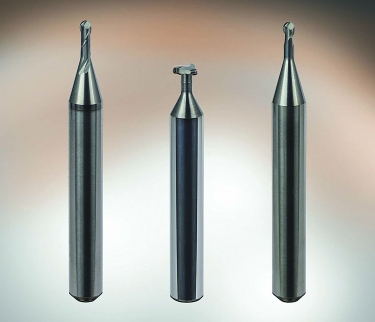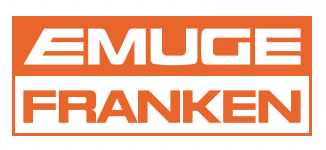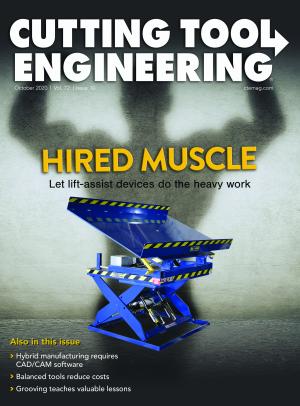Hybrid additive manufacturing is a process in which selective laser melting in a powder bed is combined with subtractive three-axis milling in a single hybrid machine tool. Although selective laser melting is the most frequently used AM technology, other appropriate technologies include laser metal deposition, direct metal deposition and metal powder application.
On one hand, hybrid AM achieves significantly higher part accuracies and surface qualities than are possible with conventional laser melting in a powder bed. On the other hand, zero-point definition through machine-integrated spindle coordinate systems makes it possible to generate precise reference and clamping surfaces for the downstream process chain. This capability minimizes the downstream process chain, especially with toolmaking, moldmaking, rapid prototyping and small series production, as well as providing new possibilities in terms of designs, structures and material properties.
One of the main advantages with hybrid AM is saving costs by reducing machining waste and scrap. Consider a block of 45-kg (100-lb.) steel placed in a CNC machine. If the finished part weighs only 11 kg (25 lbs.), this means that 34 kg (75 lbs.) of scrap is tossed in the chip bed. It is therefore prudent to consider hybrid AM.
Tool Trends
Cutting tools have evolved to support the subtractive part of the AM process and offer geometric shapes and coatings relative to the layering process with abrasive properties and toughness characteristics of the tool sintering procedure.

A selection of endmills is available from Emuge for hybrid manufacturing applications. Image courtesy of Emuge
For optimal results, select endmills specially designed with the right geometries, tool substrates and coatings for machining molds and other components that have been additively manufactured. The selection of workpiece materials includes titanium and aluminum alloys; nickel-chrome-iron; and tool, stainless and cobalt-chrome steel. For example, ballnose and radius endmills should have a special neck design optimized to minimize deflection and enhance stability. This design imparts a fine surface finish while extending tool life.
In addition, a pre-milling ballnose endmill targets roughing and pre-finishing operations to produce a specific machining allowance on an additively manufactured part. The machining direction is from top (z+) to bottom (z-). For finishing operations in a part’s construction layers no longer subject to thermal stress, the finishing cutter, also with ballnose geometry, is recommended. The cutting area of the tool designed for that pull machining from bottom to top enables finishing the material layers that no longer are thermally stressed.
A solid-carbide “back taper” radius endmill, which is similar to a T-slot cutter with a radius, is for 2D machining component undercuts. The endmill specifications are aimed at pre-finishing and finishing on additively produced parts. This tool is suitable for point milling strategies and provides the ability to take deep undercuts.
Overcoming Abrasion
Tool coatings also play a significant role when machining additively manufactured components. For instance, Emuge Corp. in West Boylston, Massachusetts, offers the new ALCR coating, which is an AlCrN-based coating that provides high wear resistance even under severe thermal stress. Because machining must be performed without coolant application as a cutter removes material while partly in the powder bed, the cutting tool experiences a high level of abrasive wear.
Dry machining is necessary for these hybrid AM applications because an inert gas atmosphere and elevated temperatures prevail in the machine chamber. Therefore, the coating prevents adhesion of a built-up edge even when cutting difficult-to-machine materials at elevated temperatures, extending tool life while imparting fine surface finishes.
Some hybrid AM applications may need solid-carbide microendmills designed to meet the demanding requirements of micromachining applications. When this is the case, microendmills with special neck geometries enable these tools to effectively cut deep contours. A high radial bending strength allows the tools to withstand alternating radial stress on the cutting edge and thus on the relieved neck during machining.
Requirements for a cutting tool always depend on the application for which the tool is intended. But in general, the ultimate goal is to find a balance between flexibility and rigidity.
Contact Details
Related Glossary Terms
- T-slot cutter
T-slot cutter
Milling cutter for machining T-slots. Desired T-slot shape is reverse of cutter shape.
- abrasive
abrasive
Substance used for grinding, honing, lapping, superfinishing and polishing. Examples include garnet, emery, corundum, silicon carbide, cubic boron nitride and diamond in various grit sizes.
- built-up edge ( BUE)
built-up edge ( BUE)
1. Permanently damaging a metal by heating to cause either incipient melting or intergranular oxidation. 2. In grinding, getting the workpiece hot enough to cause discoloration or to change the microstructure by tempering or hardening.
- computer numerical control ( CNC)
computer numerical control ( CNC)
Microprocessor-based controller dedicated to a machine tool that permits the creation or modification of parts. Programmed numerical control activates the machine’s servos and spindle drives and controls the various machining operations. See DNC, direct numerical control; NC, numerical control.
- coolant
coolant
Fluid that reduces temperature buildup at the tool/workpiece interface during machining. Normally takes the form of a liquid such as soluble or chemical mixtures (semisynthetic, synthetic) but can be pressurized air or other gas. Because of water’s ability to absorb great quantities of heat, it is widely used as a coolant and vehicle for various cutting compounds, with the water-to-compound ratio varying with the machining task. See cutting fluid; semisynthetic cutting fluid; soluble-oil cutting fluid; synthetic cutting fluid.
- endmill
endmill
Milling cutter held by its shank that cuts on its periphery and, if so configured, on its free end. Takes a variety of shapes (single- and double-end, roughing, ballnose and cup-end) and sizes (stub, medium, long and extra-long). Also comes with differing numbers of flutes.
- gang cutting ( milling)
gang cutting ( milling)
Machining with several cutters mounted on a single arbor, generally for simultaneous cutting.
- lapping compound( powder)
lapping compound( powder)
Light, abrasive material used for finishing a surface.
- milling
milling
Machining operation in which metal or other material is removed by applying power to a rotating cutter. In vertical milling, the cutting tool is mounted vertically on the spindle. In horizontal milling, the cutting tool is mounted horizontally, either directly on the spindle or on an arbor. Horizontal milling is further broken down into conventional milling, where the cutter rotates opposite the direction of feed, or “up” into the workpiece; and climb milling, where the cutter rotates in the direction of feed, or “down” into the workpiece. Milling operations include plane or surface milling, endmilling, facemilling, angle milling, form milling and profiling.
- sintering
sintering
Bonding of adjacent surfaces in a mass of particles by molecular or atomic attraction on heating at high temperatures below the melting temperature of any constituent in the material. Sintering strengthens and increases the density of a powder mass and recrystallizes powder metals.
- wear resistance
wear resistance
Ability of the tool to withstand stresses that cause it to wear during cutting; an attribute linked to alloy composition, base material, thermal conditions, type of tooling and operation and other variables.



